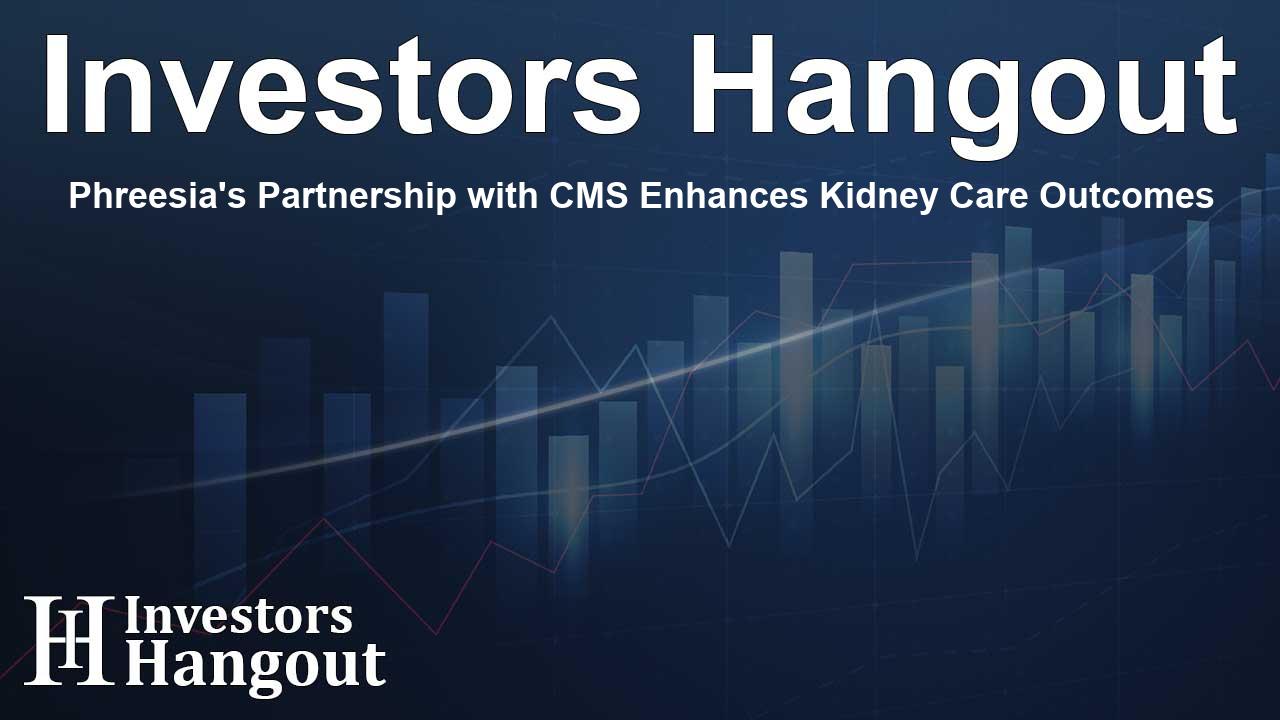Phreesia's Partnership with CMS Enhances Kidney Care Outcomes

Phreesia's Continued Commitment to Kidney Care Innovation
Phreesia, a frontrunner in patient activation technology, is thrilled to announce the renewal of its contract with the CMS Innovation Center (CMMI) through 2029. This collaboration focuses on enhancing patient engagement through the Patient Activation Measure (PAM), which evaluates how well patients understand, feel empowered, and manage their own healthcare. PAM is pioneering in that it is one of the earliest performance measures derived from patient-reported outcomes within the CMS alternative payment models.
Enhancing Patient Outcomes in Kidney Care
Since 2019, Phreesia has been a key partner in the CMMI’s Kidney Care Choices Model (KCC) aimed at benefiting nearly 200,000 Medicare beneficiaries suffering from chronic kidney disease (CKD). The KCC Model promotes early intervention to delay dialysis and encourages home dialysis while incentivizing kidney transplants to enhance patient quality of life.
Success Metrics from the KCC Evaluation
With the first annual evaluation of the KCC model recently published, substantial positive outcomes have been highlighted: an average increase of 8.8 PAM points across various patient groups, notably the 12.8-point surge among transplant patients. Such improvements are tied to potential reductions in healthcare costs by up to 8% as shown in earlier studies.
Targeted Improvements and Continued Growth
The KCC program has significantly outstripped previous kidney care interventions, doubling the typical score improvements in patient activation. Metrics indicate a notable 20% upswing in home dialysis, as well as between 8% to 26% in peritoneal dialysis rates. Furthermore, the number of patients on the transplant waitlist rose by 15%, demonstrating broader engagement and activation amongst participants.
Phreesia's Role in Driving Patient Activation
“We are honored to partner with CMMI and KCC participants in improving kidney care outcomes,” stated Hilary Hatch, PhD, Phreesia’s Chief Clinical Officer. “The first year of KCC showed remarkable surges in PAM scores reflecting how many kidney patients are taking charge of their health. As CMMI implements more patient-reported measures, we are enthusiastic about extending PAM access for diverse conditions and care environments.”
The Power of Patient Activation Measurement
The foundation of the PAM rests on robust evidence from over 800 peer-reviewed studies, affirming its ability to predict health behaviors linked to improved outcomes in patient care. An increase in patient activation is correlated with better clinical results, medication adherence, self-management of diseases, and overall satisfaction with treatment plans.
Endorsements and Future Directions
As Alan Glaseroff, MD, renowned co-founder of Stanford Coordinated Care suggests, the year one outcomes from KCC are groundbreaking. The model’s focus on clinician incentives leads to profound patient engagement, uncovering a pathway reminiscent of successes seen in prior initiatives. This continual evolution of care practices is likely to further lower expenses while enhancing patient health outcomes in subsequent years.
Looking Ahead: Phreesia's Impact
Phreesia remains dedicated to its mission of enabling healthcare providers to empower their patients. By facilitating tools for patient activation, education, and outreach, the company is poised to transform healthcare experiences. The scale of Phreesia’s operations—supporting 150 million patient visits in a recent year—highlights its ability to create meaningful change across the healthcare landscape.
Frequently Asked Questions
1. What is the primary objective of Phreesia's partnership with CMS?
The partnership focuses on enhancing patient activation and improving healthcare outcomes for kidney disease patients using the Patient Activation Measure (PAM).
2. How has the KCC model benefitted patients?
The KCC model aims to improve care for CKD patients by incentivizing preventive measures and facilitating improved patient engagement, thus enhancing their quality of life.
3. What significant findings emerged from the KCC evaluation?
The evaluation found notable increases in PAM scores and improvements in care metrics, including a surge in home dialysis rates and better patient activation across all demographics.
4. How does PAM contribute to patient outcomes?
PAM helps evaluate patient knowledge and confidence, leading to improved adherence, self-management, and higher satisfaction with care received.
5. What future developments are anticipated for Phreesia and CMMI?
Both organizations aim to expand PAM’s application to more models and conditions, continually improving patient activation efforts across various healthcare settings.
About Investors Hangout
Investors Hangout is a leading online stock forum for financial discussion and learning, offering a wide range of free tools and resources. It draws in traders of all levels, who exchange market knowledge, investigate trading tactics, and keep an eye on industry developments in real time. Featuring financial articles, stock message boards, quotes, charts, company profiles, and live news updates. Through cooperative learning and a wealth of informational resources, it helps users from novices creating their first portfolios to experts honing their techniques. Join Investors Hangout today: https://investorshangout.com/
Disclaimer: The content of this article is solely for general informational purposes only; it does not represent legal, financial, or investment advice. Investors Hangout does not offer financial advice; the author is not a licensed financial advisor. Consult a qualified advisor before making any financial or investment decisions based on this article. The author's interpretation of publicly available data shapes the opinions presented here; as a result, they should not be taken as advice to purchase, sell, or hold any securities mentioned or any other investments. The author does not guarantee the accuracy, completeness, or timeliness of any material, providing it "as is." Information and market conditions may change; past performance is not indicative of future outcomes. If any of the material offered here is inaccurate, please contact us for corrections.